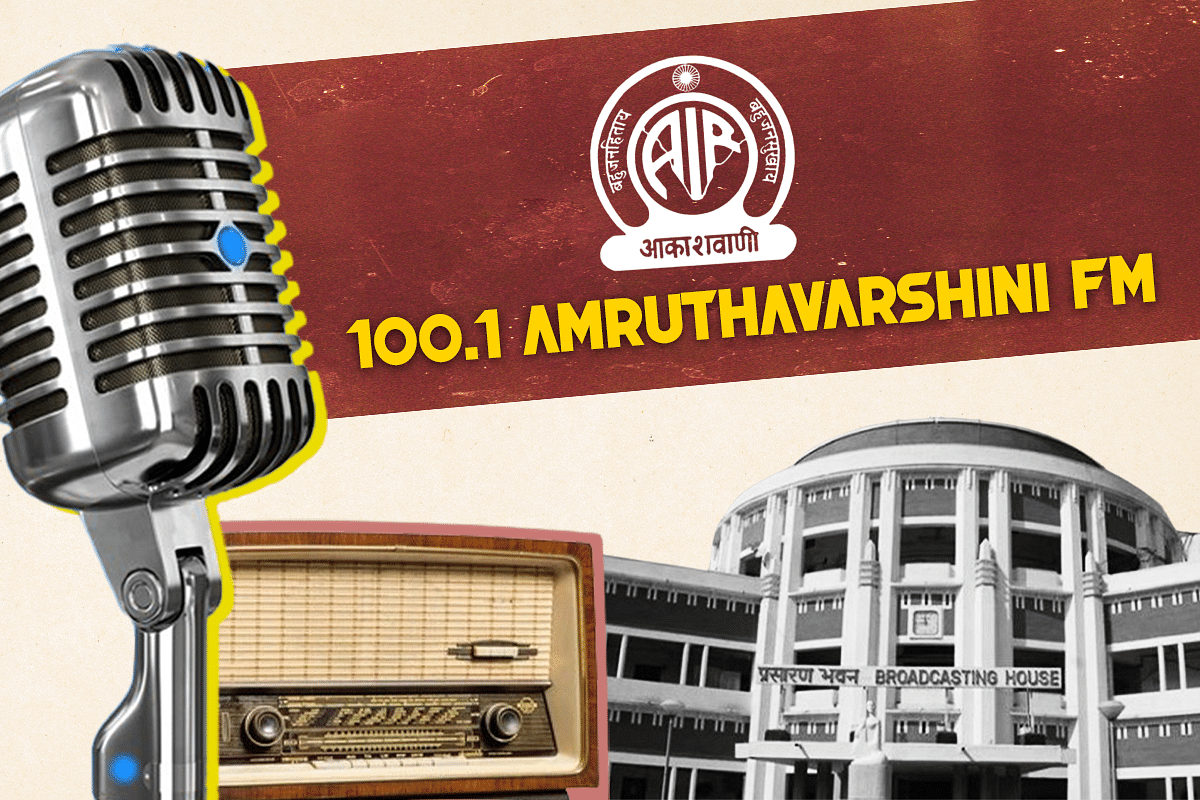Culture
Remembering Amruthavarshini — India's Lone FM Channel For Carnatic Music

Amruthavarshini used to be Bangalore's only channel for Carnatic music.
Ask anyone native to Bengaluru, and they will remind you about the golden days of radio when one could tune into All India Radio's Amruthavarshini — FM 100.1.
For years, the station has broadcast Indian classical music, Hindustani and Carnatic. Musical operas including contributions from Maharaja Jayachamarajendra Wodeyar (JCW), Shyama Shastri and Harikesanalluru Muttaiah Bhagavathar were relayed every day, on Amruthavarshini.
The decade-old FM channel is now a part of the multilingual Raagam. The content for Raagam comes from 14 AIR stations across India and is aired 24/7 digitally and on radio.
It came as a shock to the 3,000-odd empanelled artists of AIR, of which, half of them were from Bengaluru AIR alone. Unlike the former entity, Raagam does not incentivise, or empanel any artists for recording and producing original content for the radio station.
In 2021, Prasar Bharati merged Amruthavarshini into the Raagam 24x7 channel. The Member of Parliament from Bengaluru South, Tejasvi Surya, attempted to revive Amruthavarshini, but without much success. The reason — Prasar Bharati thought that the content would be more effective on Raagam, as it allows listeners to turn in for longer hours.
While it existed, Amruthavarshini gave platform for interviews with artists such as Ustad Bade Gulam Ali Khan, T Chowdaiah, M S Subbulakshmi, Vidhushi Begum Akhtar, Doreswamy Iyengar, T Sharada, G N Balasubramanian, Mallikarjuna Manasur, B S Chandrakala, Dr M Balamuralikrishna, Nadaswara Vidwan Kodandarama, among others.
Some of these interviews were popular, and are still available on the Internet, thanks to YouTube.
Many of these artists, when they were young, found the ideal platform to air their work to the city and the country. Udayaradhana, the morning music programme aired from 6 am, was immensely popular for devotional music. Between 7.30 and 8 am every morning, the contributions of Vaggeyakaras such as Muttuswami Dixithar, Shyama Shastri, Maharaja Swati Tirunal, Tyagaraju, JCW, Helavanakatte Giriyamma, Papanasham Shivan were aired. Their works were explained in a scholarly manner during the broadcast.
Amruthavarshini even broadcast the performance of the late Vidwan John B Higgins during his visit to India in the 1960s. Higgins was a Fulbright Scholar who learnt classical music and performed at concerts in Thiruvayaru.
While it was active, Amruthavarshini played music between 6 to 9:30 am and 6:30 to 11 pm. Apart from relaying Indian classical music, it also presented music classes in Kannada.
Some were miffed that the new Raagam channel merely broadcasts, and does not produce original work. On the other hand, Amruthavarshini employed dozens of artists across the region and provided them a financial incentive too, along with visibility and other benefits.
Prasar Bharti's argument is that it was to 'rationalise' AIR services, and position itself distinctively in a competitive market scenario, that the merger was made.
A top source at Prasar Bharati told Swarajya that the decision was taken "keeping the balance between public service broadcasting, and commercial concerns that focus more on quality than content." Prasar Bharati also apparently aimed to understand modern listening habits, eliminate duplication of content and optimally utilise resources.
Medium-wave channels that did not have much-differentiated content are being merged into a single channel. Complaints of over-expenditure, zero revenue and duplication of classical music content are said to be one of the triggers behind this decision to merge channels, apart from cutting costs and increasing transparency on each station's expenditure.
However, some have expressed their disappointment in Prasar Bharati for their decision because Amruthavarshini provided an opportunity for people in the city and its outskirts to listen to renowned artists and even provide a platform for deserving ones.
Locals in Bengaluru fondly recall the days they tuned into Amruthavarshini. "Being an art lover, particularly in Carnatic music, I love to listen to Amruthavarshini FM. We get to listen to the musical experience of the artists in their truest form where music comes to foray and the artist disappears; the art and the artist become one," a local said, adding that he tunes into YouTube and Spotify now, to listen to Carnatic music, instead of radio.
Support Swarajya's 50 Ground Reports Project & Sponsor A Story
Every general election Swarajya does a 50 ground reports project.
Aimed only at serious readers and those who appreciate the nuances of political undercurrents, the project provides a sense of India's electoral landscape. As you know, these reports are produced after considerable investment of travel, time and effort on the ground.
This time too we've kicked off the project in style and have covered over 30 constituencies already. If you're someone who appreciates such work and have enjoyed our coverage please consider sponsoring a ground report for just Rs 2999 to Rs 19,999 - it goes a long way in helping us produce more quality reportage.
You can also back this project by becoming a subscriber for as little as Rs 999 - so do click on this links and choose a plan that suits you and back us.
Click below to contribute.
Latest